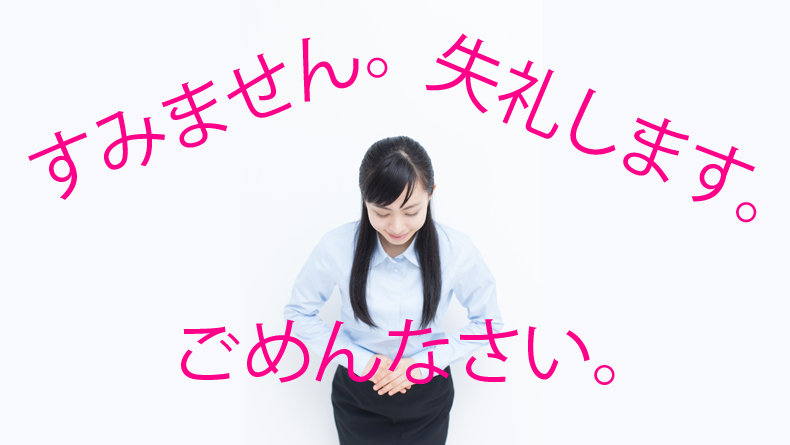Easy Japanese for Apologizing
It's Hard to Say I'm Sorry
Saying "I'm sorry" isn't always an easy thing to do - especially in an international environment. To avoid committing a social faux pas, one important part of social interactions in Japan is knowing how to apologize, especially if you have offended someone. Is it Sumimasen? Or Gomennasai? Or should you use a more polite phrase? Depending on the situation, here is what you should say.
Japanese people are quick to take responsibility, even for things that aren’t seemingly their fault. A sense of collective responsibility is strong, so apologizing about the actions of another is quite common.
However serious your transgression, learning to apologize is important.
So let’s look at three useful ways to say you are sorry.
1. Sumimasen
This is a very useful word that doesn’t just mean sorry, but is also used for catching someone’s attention. For example:
すみません、駅はどこですか? (Sumimasen, eki wa doko desu ka?)
Excuse me, where is the station?
すみません、メニューをお願いします。 (Sumimasen, menyuu o onegaishimasu.)
Excuse me, can I have the menu please?
Of course, it is also used a simple “sorry.”
遅れてしまってすみません。 (Okurete shimatte sumimasen.)
Sorry for being late.
2. Gomennasai
Gomennasai can be used interchangeably with sumimasen in some situations. However, gomennasai can only be used to mean “sorry.” Also, it’s a little more casual than sumimasen, but it is a heartfelt apology used among family, friends and people of a similar social standing as yourself.
You can also shorten it to “gomen” or “gomen ne” to be more casual.
遅れてしまってごめんなさい。 (Okurete shimatte gomen nasai.)
Sorry for being late.
3. Shitsurei shimasu
Shitsurei shimasu literally means something similar to “I have been rude,” or “I am being rude.” Here are some examples of how it is used:
失礼します。 (Shitsurei shimasu.)
This is used as an “excuse me” when entering a room or someone’s personal space. It is also used to people who perform a service, such as waiters or hotel staff who go out of their way to get something for you.
失礼しました。 (Shitsurei shimashita.)
This means something like “I’m sorry for the inconvenience,” and is used when you annoy or trouble someone. An extremely polite version of this when you really are in trouble is:
大変失礼いたしました。 (Taihenshitsurei itashimashita.)
I’m most terribly sorry.
You can also use “失礼” (shitsurei) just on its own as a simple “sorry.” This is quite casual and is usually used more by men.
One last use of this word is:
お先に失礼します。 (Osaki ni shiturei shimasu.)
This means something similar to, “may I be excused” and is used when you are the first person to leave a social gathering or the office at the end of the day.
There is a confusing profusion of ways to say “sorry,” with subtle nuances for very specific situations that even the Japanese have difficulty mastering. However, these three ways of apologizing cover most bases when it comes to apologizing in Japanese.
For more useful Japanese learning materials, including PDF cheat sheets and podcasts, please visit Learn Japanese Pod.

GAIJINPOT STUDENT PLACEMENT PROGRAM
Immerse yourself in the language and culture of Japan by studying at a Japanese language school.













Leave a Reply